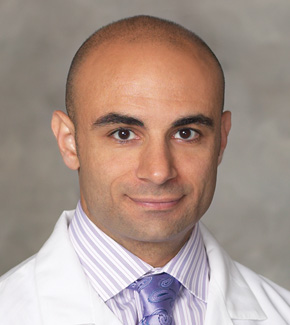Here five spine surgeons discuss the role and scope-of-practice for physician assistants in today's healthcare climate.
Ask Spine Surgeons is a weekly series of questions posed to spine surgeons around the country about clinical, business and policy issues affecting spine care. We invite all spine surgeon and specialist responses. Next week's question: Can independent physician practices survive and thrive in today's healthcare climate?
Please send responses to Anuja Vaidya at avaidya@beckershealthcare.com by Wednesday, Feb. 11, at 5 p.m. CST.
Question: What is the physician assistant's role with surgeons? How far should it expand?
Hooman Melamed, MD, DISC Sports & Spine Center (Marina Del Rey, Calif.): Physician assistants are taught on a medical  model, which means they may perform any task or procedure that their supervising physicians are licensed and credentialed to do. This allows PAs to act as extensions of the doctors with whom they work. In a practice setting, PAs work both in the clinic and operating room. They see, diagnose, treat and prescribe medication to patients. PAs also run their own clinics. In the OR, they first assist, not only retracting but in some cases opening and closing wounds. This allows supervising physicians to be more efficient, which — in turn — allows them to see and spend more time with patients and/or take more time for themselves.
model, which means they may perform any task or procedure that their supervising physicians are licensed and credentialed to do. This allows PAs to act as extensions of the doctors with whom they work. In a practice setting, PAs work both in the clinic and operating room. They see, diagnose, treat and prescribe medication to patients. PAs also run their own clinics. In the OR, they first assist, not only retracting but in some cases opening and closing wounds. This allows supervising physicians to be more efficient, which — in turn — allows them to see and spend more time with patients and/or take more time for themselves.
With the changes in healthcare occurring, the industry needs to have more providers in order to meet the demands of increased patient loads. The scope of a physician assistant does not need to change, but the role should. PAs can be on the frontlines, taking a more prominent role to reduce waiting times and allow patients to be seen in a timelier manner. In a surgical environment, the role of the PA can be expanded in pain management and anesthesia.
 Brian R. Gantwerker, MD, The Craniospinal Center of Los Angeles: The physician assistant mainly acts as a steward for the physician. My concern is that surgeons will have them act as a surrogate instead. With the pressure to see more patients, the natural tendency will be to offload more responsibility onto this midlevel practitioner. We as surgeons should remember that the buck stops with us.
Brian R. Gantwerker, MD, The Craniospinal Center of Los Angeles: The physician assistant mainly acts as a steward for the physician. My concern is that surgeons will have them act as a surrogate instead. With the pressure to see more patients, the natural tendency will be to offload more responsibility onto this midlevel practitioner. We as surgeons should remember that the buck stops with us.
Isador Lieberman, MD, MBA, director, Scoliosis & Spine Tumor Center, Texas Back Institute (Plano):  The PA, in its truest sense, is a physician extender. A stellar PA works in synchrony with the surgeon, extending his/her capabilities. The PA must understand the surgeon's treatment philosophy, be technically proficient when needed and they must serve the practice's patients with the same, if not more, compassion and courtesy than the surgeon. The PA should be proficient at triaging the appropriate patients through the diagnostic work up and initial treatment. The PA must appreciate exactly when the surgeon needs to be involved in the decision making.
The PA, in its truest sense, is a physician extender. A stellar PA works in synchrony with the surgeon, extending his/her capabilities. The PA must understand the surgeon's treatment philosophy, be technically proficient when needed and they must serve the practice's patients with the same, if not more, compassion and courtesy than the surgeon. The PA should be proficient at triaging the appropriate patients through the diagnostic work up and initial treatment. The PA must appreciate exactly when the surgeon needs to be involved in the decision making.
At times the PA can serve the role of shield in difficult situations. In addition the PA might at times have to be innovative and work to keep the surgeon on track. It takes time, effort and mutual respect to develop the trusting relationship needed in the coordinated effort to expand the surgeons' ability to care for more patients.
 Richard A. Kube II, MD, CEO, founder, Prairie Spine & Pain Institute, Peoria, Ill.: I think every practice needs to assess the role of a PA. I see them in our practice as true extenders of the surgeon. As reimbursements decline and administrative duties increase, surgeons are finding it increasingly necessary to multitask. Having a PA who is motivated and a surgeon willing to devote the appropriate amount of time and resources to train him/her is crucial if the model is going to work. I think the limits are really determined by the individuals and regulatory standards.
Richard A. Kube II, MD, CEO, founder, Prairie Spine & Pain Institute, Peoria, Ill.: I think every practice needs to assess the role of a PA. I see them in our practice as true extenders of the surgeon. As reimbursements decline and administrative duties increase, surgeons are finding it increasingly necessary to multitask. Having a PA who is motivated and a surgeon willing to devote the appropriate amount of time and resources to train him/her is crucial if the model is going to work. I think the limits are really determined by the individuals and regulatory standards.
Gowriharan "Ty" Thaiyananthan, founder of BASIC, Newport Beach, Calif.: Physician assistants have typically allowed spine surgeons to more efficiently and selectively spend their time delivering the highest possible care. Well-trained PAs, with experience, can function much like chief residents. 
On the office visit side, PAs can provide postoperative care, routine clinical patient follow up and office-based procedural care. On the hospital or surgical center side, a qualified and experienced PA can be a true asset in assisting with patient positioning in the operating room, opening and closing a surgical case as well as provide assistance in rounding on patients. This allows patients and their families' additional access to a knowledgeable provider regarding patient care plans.
As the emphasis on seeing more patients, while still maintaining quality, patient care and satisfaction grows, I believe the use of PAs and other midlevel providers such as nurse practitioners will become more crucial to meet these goals. Along with that, I believe the roles and responsibilities of midlevel providers will continue to expand. The question of how far their responsibilities will grow is really dependent on the demands placed on physicians to meet the ever increasing mandates set by healthcare managing entities.
More articles on spine:
St. Vincent Charity Medical Center's physician group adds spine surgeon, neurosurgeon
The Mayfield Clinic plans new 45k-sq-ft headquarters
Pain sensitivity impacts spine surgery outcomes — 5 key findings

